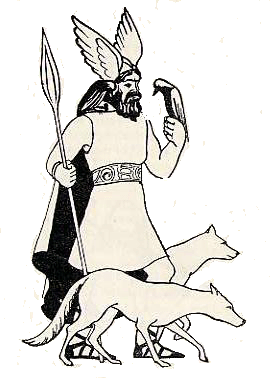| |
In
811 when the Norse Viking's began raiding the coast of Ulster, evidence
recorded, in the Annals of Ulster, stated that the Irish, the Ulaid
in particular with their organized naval power, had adopted an offensive
policy and  decisively
defeated the Vikings in that year. With the exception of raids on the
coasts of Galway, Mayo and Kerry in the next year 812, Viking activity
is not mentioned again until 821, when they attacked Howth near Dublin
and carried off a large number of women, presumably as slaves. decisively
defeated the Vikings in that year. With the exception of raids on the
coasts of Galway, Mayo and Kerry in the next year 812, Viking activity
is not mentioned again until 821, when they attacked Howth near Dublin
and carried off a large number of women, presumably as slaves.
The maritime
kingdom of Dal Fiatach in north eastern Ireland situated close to western
Scotland, both areas had high concentrations of rich monasteries making
them highly desirable targets for Viking raids. The annals of Ulster
relates that in 823 Bangor was attacked and plundered, the raiders returned
the following year and 'destroyed the oratory and shook the relics of
Comgall from their shrine' Raids took place the following year 825 on
the monasteries of Down which was plundered and Movilla 'with its oratories
burned'. All the aforementioned raids have been ascribed to the same
band of Vikings.
Within three years the specter of
the destruction of its monasteries, the death of many of its scholars
and people together the violation of its women and religious relics,
must have shook the Dal Fiatach kingdom to its roots. Later that year
however they graphically demonstrated that they possessed a formidable
fighting force both on land and sea, when they successfully repulsed
the attacks for the second time in fifteen years, forcing the Vikings
to concentrate their attentions on other coastal communities. Which
perhaps explains why the Dal Fiatach are not mentioned in the annals
for another seventeen years.
|
|